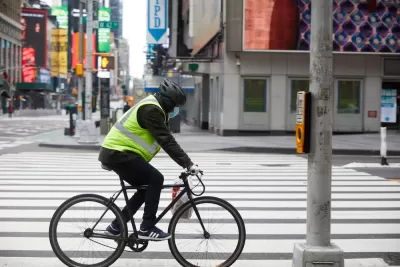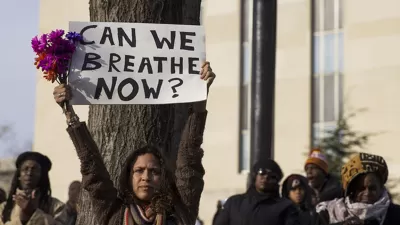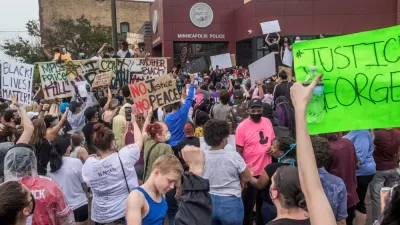As biking gains popularity as a transportation mode during the pandemic, planners are called on to elevate the role of "invisible cyclists"—people of color on bikes—in the process of redesigning and re-engineering streets.

An article by Julian Agyeman, professor of Urban and Environmental Policy and Planning at Tufts University, calls on city planners, lawmakers, and bike advocates to better address and remove barriers to cycling for people living in poorer neighborhoods, in a time when more and more people are using the bike as a primary mode of transportation.
Design-related, infrastructural challenges, such as providing more bike lanes, or better still, protected bike lanes – paths separated from both road and sidewalk – are important. But the more fundamental barriers are political, cultural and economic in nature. Failure to acknowledge and act accordingly, risks compromising the ability of low-income and minority groups to enjoy the full benefits of cycling.
The article details the history of bike advocacy, which has tended to produce outcomes in keeping with the whiteness of its constituency—bike lanes have face criticism as a harbinger of gentrification along the way, for example. But according to Agyeman, who provides evidence to back this claim, there are many people of color who also advocate for safe bike infrastructure, they just go "unrecognized, underreported and unrepresented."
"Cyclists of color tend to miss the eye of city planners, but the same can’t be said of the law," according to Agyeman, who provides plenty of evidence that people of color on bikes are policed in a completely different way than white people on bikes. This is one of the discriminatory facts of life in the public realm that advocates argue will perpetuate racial inequality in planning for ostensibly progressive causes like bike infrastructure and traffic safety.
"As cities reimagine their streets in a post-pandemic world, politicians, city planners and bike advocates could better recognize that cyclists have differing status, rights, needs and capabilities depending on their social and racial background," according to Agyeman.
FULL STORY: Poor and black ‘invisible cyclists’ need to be part of post-pandemic transport planning too

Trump Administration Could Effectively End Housing Voucher Program
Federal officials are eyeing major cuts to the Section 8 program that helps millions of low-income households pay rent.

Planetizen Federal Action Tracker
A weekly monitor of how Trump’s orders and actions are impacting planners and planning in America.

Ken Jennings Launches Transit Web Series
The Jeopardy champ wants you to ride public transit.

Rebuilding Smarter: How LA County Is Guiding Fire-Ravaged Communities Toward Resilience
Los Angeles County is leading a coordinated effort to help fire-impacted communities rebuild with resilience by providing recovery resources, promoting fire-wise design, and aligning reconstruction with broader sustainability and climate goals.

When Borders Blur: Regional Collaboration in Action
As regional challenges outgrow city boundaries, “When Borders Blur” explores how cross-jurisdictional collaboration can drive smarter, more resilient urban planning, sharing real-world lessons from thriving partnerships across North America.

Philadelphia Is Expanding its Network of Roundabouts
Roundabouts are widely shown to decrease traffic speed, reduce congestion, and improve efficiency.
Urban Design for Planners 1: Software Tools
This six-course series explores essential urban design concepts using open source software and equips planners with the tools they need to participate fully in the urban design process.
Planning for Universal Design
Learn the tools for implementing Universal Design in planning regulations.
Ada County Highway District
Clanton & Associates, Inc.
Jessamine County Fiscal Court
Institute for Housing and Urban Development Studies (IHS)
City of Grandview
Harvard GSD Executive Education
Toledo-Lucas County Plan Commissions
Salt Lake City
NYU Wagner Graduate School of Public Service





























